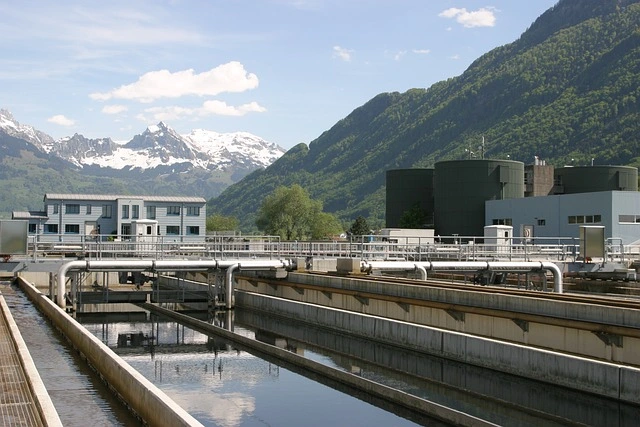Over the past few years, the awareness surrounding PFAS (per- and polyfluoroalkyl substances) contamination has surged, prompting many individuals to consider legal action against responsible parties. If you suspect that you or your loved ones have been harmed by exposure to these chemicals, or if you’re concerned about environmental damage in your community, understanding the basics of filing a PFAS lawsuit is vital. This post will guide you through the important factors to consider, helping you make informed decisions about your potential case.
Understanding PFAS: Definition and Health Impacts
To grasp the significance of filing a PFAS lawsuit, it’s crucial to understand what PFAS are and their associated health risks. PFAS, or per- and polyfluoroalkyl substances, are a class of synthetic chemicals used in various industrial and consumer products due to their resistance to water, grease, and stains. Unfortunately, these chemicals have become pervasive in the environment and are linked to numerous health issues.
What are PFAS?
On a fundamental level, PFAS are man-made chemicals that have been utilized since the 1940s. They are commonly found in products such as non-stick cookware, water-repellent fabrics, and firefighting foams. Key characteristics of PFAS include their ability to repel water and oil, making them appealing for various applications. However, their persistence in the environment raises concerns about long-term exposure and contamination.
Health Effects Linked to PFAS Exposure
After significant research, it has been shown that exposure to PFAS is associated with numerous health effects, including hormonal disruptions, immune system impairment, and increased risks of certain cancers. These substances can accumulate in your body over time due to their persistence, leading to concerning health implications that are only now being fully understood.
To further understand the health effects linked to PFAS exposure, studies have identified associations between these chemicals and various serious health issues. You may experience symptoms such as elevated cholesterol levels, liver damage, thyroid dysfunction, and reproductive problems. Increased risks of kidney and testicular cancer have been documented, highlighting the urgent need for awareness and action regarding PFAS contamination. It’s crucial to assess your potential exposure to these harmful substances, especially if you live near industrial sites or areas with known PFAS contamination.

Grounds for Filing a PFAS Lawsuit
Any person affected by PFAS contamination may have grounds for a lawsuit. Common reasons include exposure due to contaminated water sources, harmful levels of PFAS in food, or industrial discharge. If you can demonstrate that PFAS have impacted your health or property, you may seek justice and compensation for the damages incurred.
Evidence of Harm
By gathering evidence, you can strengthen your PFAS lawsuit. Medical records, testimonies, and expert reports verifying health conditions linked to PFAS exposure can support your claim. The clearer the connection between your circumstances and the contamination, the stronger your case will be.
Sources of PFAS Contamination
By identifying the sources of PFAS contamination in your area, you can outline the basis for your lawsuit. Common sources include industrial facilities, military bases, and contaminated water supplies. Understanding where the contamination originated can help you target responsible parties in your legal action.
For instance, industrial sites that discharge wastewater containing PFAS into nearby water bodies or landfills can be significant sources of contamination. Additionally, firefighting foams used at airports and military training sites have been found to leach PFAS into the environment. By pinpointing these sources, you can build a more compelling case against those responsible for your exposure.
Types of PFAS Lawsuits
There’s a range of PFAS lawsuits that individuals can pursue, depending on their unique circumstances. These can be categorized as follows:
- Individual Lawsuits
- Class Action Lawsuits
- Property Damage Claims
- Medical Monitoring Cases
- Penalties for Regulatory Violations
After understanding these categories, you can better assess your situation and the type of lawsuit that may be applicable.
| Type of Lawsuit | Description |
| Individual Lawsuits | Claims filed by individuals seeking compensation for personal injuries. |
| Class Action Lawsuits | Group lawsuits filed on behalf of multiple affected parties. |
| Property Damage Claims | Claims related to damage caused to property by PFAS. |
| Medical Monitoring Cases | Claims seeking funds for ongoing health monitoring. |
| Penalties for Regulatory Violations | Claims related to environmental regulations stemming from PFAS misuse. |
Individual Lawsuits
For those impacted by PFAS exposure, individual lawsuits allow you to seek compensation specifically for your personal injuries or health issues. This legal route enables you to address the unique circumstances of your case, including medical expenses, lost wages, and pain and suffering.
Class Action Lawsuits
At times, multiple individuals affected by PFAS contamination may find it advantageous to pursue a class action lawsuit. This type of legal action consolidates many similar claims into a single case, which can distribute the legal costs and streamline the process.
Understanding class action lawsuits is vital for you if you share similar claims with others affected by PFAS. Joining forces with fellow victims can also amplify your potential results and provide a stronger stance against corporate defendants. If you believe you’re part of a larger group, consulting with an attorney experienced in environmental law can help determine whether class action litigation is the right choice for you.
Legal Process of Filing a PFAS Lawsuit
All individuals considering a PFAS lawsuit should understand the legal process involved. This includes initial consultations, evidence gathering, and ultimately, the court proceedings. Engaging in this legal journey requires that you navigate several phases, ultimately seeking justice and compensation for the harm caused by PFAS exposure.
Initial Consultation with Legal Counsel
For the best outcomes in your PFAS lawsuit, start with an initial consultation with experienced legal counsel. During this meeting, you’ll discuss your specific situation, potential claims, and the legal options available to you. A knowledgeable attorney can help clarify your rights and outline the next steps in the process.
Gathering Evidence and Documentation
Above all, effective gathering of evidence and documentation is crucial to building a strong PFAS lawsuit. This involves compiling medical records, exposure history, and any correspondence related to PFAS contamination that may support your case.
Lawsuit success hinges on the documentation and evidence you provide. You should collect medical records that show your health conditions related to PFAS exposure, personal accounts of symptoms, and any reports from environmental assessments. Additionally, gather any proof of exposure such as employment records or residential history related to contaminated sites. Strong evidence can greatly enhance your case’s credibility and improve your chances of receiving the compensation you deserve.
Potential Compensation for Victims
Many victims of PFAS exposure may be entitled to compensation for various damages. This can include medical expenses, lost wages, and more, depending on the specifics of your case and the extent of your exposure. It’s necessary to consult with a lawyer experienced in environmental law to explore your options for recovery.
Medical Expenses
Any medical expenses incurred due to PFAS contamination can be included in your compensation claim. This encompasses treatment costs for illnesses directly linked to your exposure, ongoing medical care, medication costs, and any necessary future medical expenses. Proper documentation of these costs will be vital in supporting your claim.
Emotional Distress and Punitive Damages
An award for emotional distress acknowledges the psychological impact of living with the consequences of PFAS exposure. You may also seek punitive damages, which serve to punish the responsible party for their negligence or wrongdoing, thereby deterring others from similar behavior. These damages can significantly increase your overall compensation.
Considering the psychological toll that PFAS exposure can have on you, emotional distress claims are a vital aspect of any lawsuit. You may experience anxiety, depression, or a diminished quality of life due to the uncertainty of your health and the impact on your family’s well-being. Punitive damages, awarded in cases where the defendant acted with recklessness or gross negligence, can not only provide additional financial support but also send a strong message that irresponsible actions will not be tolerated. Consulting with an experienced attorney can help accurately assess your circumstances and maximize potential compensation for both emotional and punitive damages.
Current Trends and Case Studies
Now, the landscape of PFAS litigation is evolving rapidly. Significant trends have emerged, as demonstrated by notable case studies:
- In 2020, DuPont settled a lawsuit for $50 million related to PFAS contamination affecting a community in West Virginia.
- In 2021, a court in Michigan awarded $62 million to residents impacted by PFAS leaking from a chemical plant.
- New York State initiated a $400 million lawsuit against 3M and others for PFAS pollution in drinking water sources.
- Research indicates nearly 200,000 residents in the U.S. are exposed to unsafe PFAS levels, prompting growing litigation.
Notable PFAS Lawsuits
For those exploring PFAS lawsuit options, reviewing notable cases is beneficial. A prominent example is the ongoing litigation against 3M and DuPont, where communities affected by contaminated water supplies have banded together to seek justice. These cases illustrate the potential for substantial financial compensation and the importance of holding corporations accountable for their role in environmental pollution.
Legal Precedents Impacting Future Cases
Before pursuing a PFAS lawsuit, understanding legal precedents is imperative. Recent rulings have paved the way for stronger claims against corporations, showing a rising judicial willingness to recognize the harms of PFAS exposure. Courts have increasingly sided with plaintiffs, establishing that companies can be held liable for environmental damages linked to PFAS.
Another key factor influencing future cases is the growing body of scientific evidence demonstrating the health impacts of PFAS, leading to stronger regulatory measures. This will likely encourage more plaintiffs to come forward, bolstering the trend of successful litigations. Additionally, the outcomes of these cases serve to establish important benchmarks that can aid future lawsuits, as trends indicate courts may continue to favor victims adversely affected by PFAS contamination.

Summing up
To wrap up, if you are considering filing a PFAS lawsuit, it’s important to understand the legal landscape surrounding these harmful chemicals. You should gather evidence of exposure and document any health issues linked to PFAS. Consulting a qualified attorney who specializes in environmental law can help you navigate your case effectively. Be prepared for potential challenges, as these lawsuits can be complex and lengthy. Staying informed about your rights and the ongoing developments in PFAS litigation will empower you in seeking justice and compensation for your suffering.


















